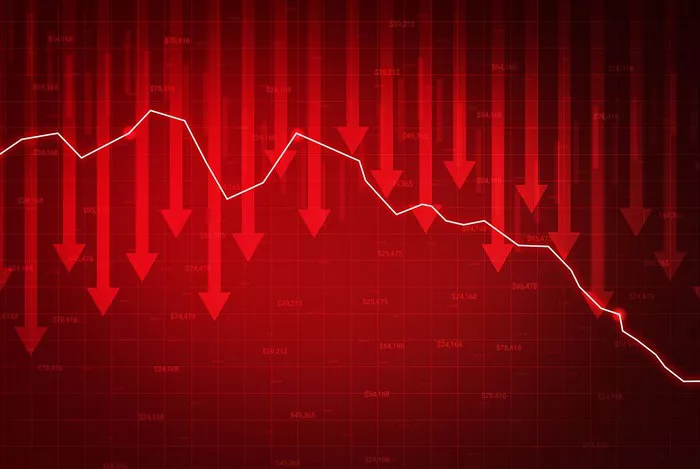Minimum wage plays a crucial role in the economy of any country, serving as the baseline income for workers and influencing broader economic conditions. In Mexico, the minimum wage is a significant part of the labor market structure, impacting millions of workers across different sectors. Understanding the minimum wage in Mexico, especially in USD terms, provides valuable insight for businesses, workers, and international investors.
This article will delve into the current state of minimum wage in Mexico, factors influencing its levels, and how it compares to other countries’ minimum wages, particularly in USD terms.
Overview of Minimum Wage in Mexico
Mexico, like many countries, has set a minimum wage to ensure that workers receive a basic income that reflects the cost of living. The minimum wage is determined by the government, typically through the Mexican Ministry of Labor and Social Welfare. This rate applies to all workers, but it can differ based on geographical regions and specific sectors.
In recent years, Mexico has seen significant changes in its approach to minimum wage policies, as the country aims to reduce poverty levels and improve the standard of living for its population. The Mexican government periodically adjusts the minimum wage to account for inflation, economic growth, and other socio-economic factors.
Minimum Wage in Mexico: Current Figures
The minimum wage in Mexico is set on a daily basis and is subject to annual revisions. As of the latest data for 2024, the general minimum wage in Mexico is approximately 207.44 Mexican Pesos (MXN) per day. However, this amount can vary depending on the region. The country has divided its regions into two main zones:
Zone A: Includes urban centers with higher living costs such as Mexico City, Guadalajara, and Monterrey.
Zone B: Covers the rest of the country where the cost of living is relatively lower.
The minimum wage in Zone A is higher than in Zone B to account for the higher cost of living in urban areas. It’s important to note that these figures are adjusted annually, and the government’s goal is to ensure that the wage is in line with inflation and economic conditions.
Converting Mexican Pesos to USD
The exchange rate between the Mexican Peso (MXN) and the United States Dollar (USD) fluctuates. As of early 2024, the exchange rate is approximately 1 USD = 18.50 MXN. Using this rate, we can calculate the minimum wage in Mexico in USD.
For Zone A, the minimum wage per day would be approximately:
207.44 MXN ÷ 18.50 = 11.20 USD per day
For Zone B, where the wage is lower, the calculation would look like:
185.56 MXN ÷ 18.50 = 10.03 USD per day
Thus, the daily minimum wage in Mexico is about 10 to 11 USD, depending on the region.
Minimum Wage in Mexico Over the Years
The minimum wage in Mexico has seen significant increases in recent years. For example, from 2018 to 2024, there has been a substantial rise in the nominal value of the minimum wage. This is part of a broader strategy by the Mexican government to improve the living conditions of its workers and reduce poverty levels.
In 2018, the daily minimum wage was approximately 88.36 MXN (around 4.77 USD, based on the exchange rate at the time). The government has steadily increased the wage as part of its efforts to address inequality and the growing cost of living in the country.
These increases are often linked to inflation rates and the government’s fiscal policy, but they are also influenced by political pressures and social demands for better wages.
Economic Impact of Minimum Wage Increases
Increasing the minimum wage has both positive and negative effects on the economy. On the positive side, higher wages help reduce poverty and increase purchasing power among the lower-income population. This can lead to higher consumer spending and stimulate demand in the economy.
However, there are also potential downsides to significant wage increases. Businesses, especially small and medium-sized enterprises (SMEs), may struggle to meet the higher wage demands, leading to potential job cuts or reduced hiring. Additionally, inflation may rise if businesses pass on the increased labor costs to consumers, resulting in higher prices for goods and services.
Minimum Wage in Mexico Compared to Other Countries
When comparing Mexico’s minimum wage to other countries, especially in USD terms, it becomes evident that Mexico’s wage is significantly lower than in many developed economies. For example, in the United States, the federal minimum wage is set at 7.25 USD per hour, which is substantially higher than Mexico’s daily minimum wage of approximately 10-11 USD.
However, it is essential to consider the cost of living in each country when making such comparisons. In Mexico, the cost of living is significantly lower than in the U.S., meaning that the purchasing power of a Mexican worker can be relatively higher in Mexico than it would be in the United States for someone earning the U.S. federal minimum wage.
Global Minimum Wage Comparison
To put Mexico’s minimum wage in a global context, let’s look at some other countries:
United States: The federal minimum wage is 7.25 USD per hour, translating to about 58 USD per day (assuming an 8-hour workday).
Canada: The minimum wage varies by province but typically ranges from 11.75 CAD (8.60 USD) to 16.00 CAD (11.85 USD) per hour.
Germany: The national minimum wage in Germany is 9.60 EUR (around 10.50 USD) per hour, or approximately 84 USD per day.
United Kingdom: The minimum wage is 10.42 GBP (13.06 USD) per hour for workers aged 23 and over, equivalent to around 104 USD per day.
As these comparisons show, Mexico’s minimum wage is significantly lower than many developed countries. However, as mentioned earlier, Mexico’s cost of living is also lower, and this helps offset the difference to some extent.
Factors Influencing Mexico’s Minimum Wage
Several factors influence the determination of the minimum wage in Mexico. These factors include:
1. Inflation Rates
Inflation is a critical factor in determining minimum wage adjustments. If inflation is high, the purchasing power of the minimum wage decreases, and the government may raise wages to help workers keep up with rising costs.
2. Economic Growth
Mexico’s economic performance also influences wage increases. If the economy is growing and unemployment is low, workers may demand higher wages, and employers may be willing to pay more due to increased productivity.
3. Government Policy
The Mexican government plays a central role in determining the minimum wage. The government sets the minimum wage annually, and these decisions are influenced by economic conditions, political pressures, and social goals.
4. Labor Market Conditions
The demand for labor, particularly in key industries such as agriculture, manufacturing, and services, affects wage rates. If labor demand is high, wages may rise due to competition for workers.
5. Global Economic Conditions
Mexico’s economy is also influenced by global trends and economic conditions, such as trade agreements, foreign direct investment, and global commodity prices. For example, changes in the U.S. economy can impact the Mexican labor market, as the U.S. is Mexico’s largest trading partner.
Challenges Faced by Minimum Wage Earners in Mexico
Despite recent increases in the minimum wage, many workers in Mexico still face challenges in making ends meet. The cost of living, especially in major urban centers like Mexico City, has risen rapidly, and wages have not always kept up with these increases.
In addition to the high cost of living, many minimum wage earners work in informal sectors, where labor laws are less strictly enforced. This means that workers may not receive benefits such as health insurance, social security, or paid vacation days, which further compounds their financial difficulties.
Conclusion
The minimum wage in Mexico, when converted to USD, remains relatively low compared to other countries. However, it is essential to consider the local context, including the cost of living, when evaluating its impact on workers. Mexico has made significant strides in raising the minimum wage in recent years, but challenges remain for many low-income workers.
As the Mexican government continues to adjust the minimum wage to address inflation and improve living standards, the question of how these changes impact the broader economy remains a key point of interest for policymakers, businesses, and workers alike. For those exchanging money or engaging in international trade, understanding the minimum wage in Mexico in USD terms provides valuable insight into the country’s economic landscape.




























